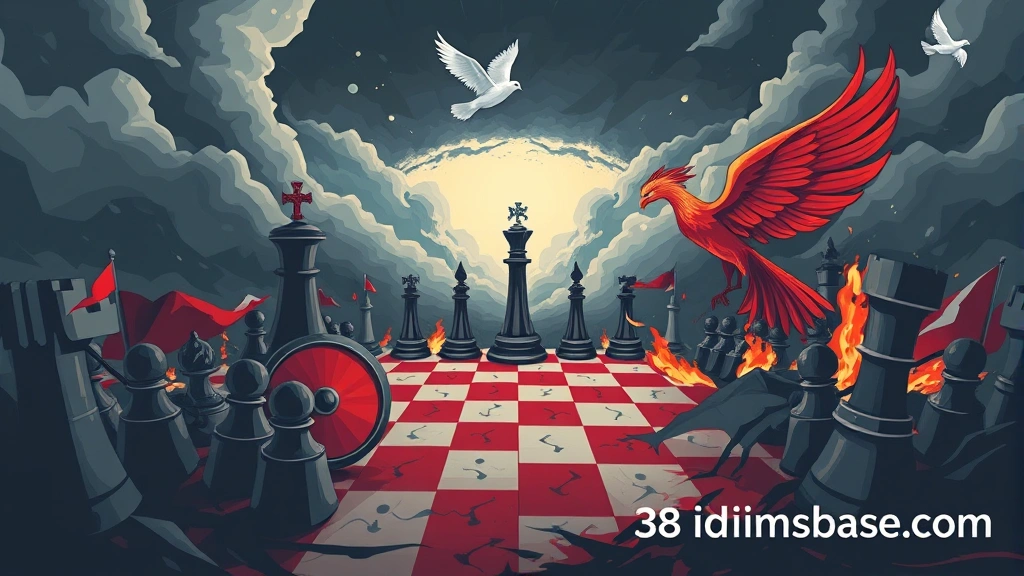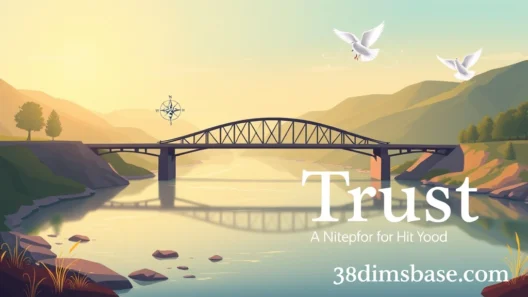Have you ever stopped to think about how we talk about war? It’s a heavy topic, isn’t it? But often, when we try to describe something as vast and complex as conflict, our everyday language just isn't enough. That's where metaphors come in! They help us grasp the unimaginable by comparing it to something more familiar. It’s like shining a spotlight on a dark, intricate stage.
Metaphors for war aren't just poetic devices; they shape our understanding and even our feelings about conflict. They can reveal the brutal truth, highlight the human cost, or even, sometimes, dangerously simplify it. Let's dive into 38 powerful metaphors that paint vivid pictures of war, exploring how each one helps us see this profound human experience from a new angle. Ready to explore?
The Brutality and Destruction of War
War is never pretty. These metaphors highlight the raw, destructive power and the sheer brutality that conflict unleashes. They pull no punches, showing us the harsh realities.
- War is a Beast: Imagine a ravenous, untamed creature, tearing through everything in its path. This metaphor emphasizes war's wild, uncontrollable, and destructive nature. It devours, it rages, it leaves nothing but desolation.
- War is a Firestorm: Think of a massive, uncontrollable blaze, consuming everything in its wake. It signifies rapid, widespread destruction, leaving only ashes and scorched earth.
- War is a Scythe: A scythe is a tool for harvesting, but here it's about indiscriminately cutting down lives. This chilling metaphor speaks to the vast, cold, and often impersonal taking of life during conflict.
- War is a Meat Grinder: This one is stark and horrifying. It conjures an image of lives being fed into a machine, crushed and destroyed without mercy. It stresses the dehumanizing and mechanical slaughter.
- War is a Plague: Just like a disease, war spreads, infecting everything it touches. It brings suffering, death, and widespread societal breakdown, leaving few untouched.
- War is a Hurricane: Powerful, chaotic, and utterly devastating. This metaphor highlights war's overwhelming force, its ability to rip apart communities and structures, and the immense, irreversible damage it causes.
- War is an Avalanche: An unstoppable force, burying everything beneath it. It suggests sudden, overwhelming destruction and the feeling of being helplessly engulfed by an immense, destructive power.
- War is a Cancer: It starts small, often unnoticed, then grows, spreading its destructive tendrils throughout a society or region, consuming it from within. It’s insidious and difficult to eradicate.
- War is a Volcano Erupting: A sudden, violent, and explosive release of destructive power. It signifies pent-up tensions finally bursting forth, causing widespread devastation and leaving a scarred landscape.
- War is a Draining Swamp: It sucks resources, lives, and hope, leaving participants mired and exhausted. It suggests a long, drawn-out conflict that slowly saps strength and vitality.
War as a Game or Contest
Sometimes, war is framed as a strategic struggle, a test of wills, or even a twisted competition. These metaphors often focus on the tactical aspects, though they can sometimes dangerously downplay the human cost.
- War is a Chess Game: Each move is calculated, strategic, and aimed at outmaneuvering the opponent. It emphasizes the intellectual, strategic planning, and the idea of sacrificing pieces to win the larger game.
- War is a Poker Game: Bluffing, reading your opponent, and going "all in" are key. This metaphor highlights the elements of risk, deception, and high stakes, where the ultimate gamble is human lives.
- War is a Tug-of-War: Two sides pulling with all their might, locked in a grueling struggle for dominance. It emphasizes the back-and-forth nature of conflict, the struggle for ground, and the sheer effort involved.
- War is a Race: A desperate sprint to achieve objectives before the other side, often implying a sense of urgency and competition for resources or territory.
- War is a Dance: While seemingly graceful, this metaphor can represent a dangerous, intricate back-and-forth, where each move is a response to the other, leading to a potentially fatal conclusion. It highlights the choreographed nature of military maneuvers.
- War is a Boxing Match: Two opponents, locked in a brutal, direct confrontation, trading blows until one is defeated. It focuses on the direct, physical struggle and the clear victor/loser dynamic.
War as a Journey or Process
War isn't just a single event; it's a progression, a path taken with profound consequences. These metaphors describe the unfolding nature of conflict and the journey it forces upon those involved.

- War is a Long Tunnel: Dark, uncertain, and with no clear end in sight. It suggests a journey through hardship and despair, where the light at the end is elusive.
- War is a River of Blood: A horrifying and vivid image of the continuous flow of casualties. It emphasizes the relentless and overwhelming scale of loss of life.
- War is a Crucible: A severe test or trial that purifies or transforms. It suggests that war, despite its horrors, can forge individuals or nations, albeit through immense suffering.
- War is a Sickness that Must Run Its Course: Like an illness, it has a beginning, a middle, and an eventual end, but during its duration, it causes immense suffering and weakens the body (or society).
- War is a Seed: Planted by grievances or ambitions, it grows into a destructive force. This metaphor highlights the origins of conflict and how seemingly small issues can escalate into massive violence.
- War is a Descent into Madness: A gradual slide into irrationality, chaos, and a loss of humanity. It speaks to the psychological toll and the breakdown of normal societal rules.
War as an Internal or Abstract State
Beyond the physical battles, war has deep psychological and societal impacts. These metaphors delve into the internal states, the emotional toll, and the abstract nature of conflict.
- War is a Nightmare: Terrifying, chaotic, and something you desperately want to wake up from. It emphasizes the psychological horror and the feeling of being trapped in a living hell.
- War is a Silent Scream: The unspoken pain, the unheard suffering of countless individuals. It highlights the profound emotional agony and the inability to articulate the horror.
- War is a Gnawing Hunger: A constant, insatiable need for victory or revenge, consuming everything. It speaks to the deep-seated desires or grievances that fuel conflict.
- War is a Veil: It obscures truth, humanity, and clarity, making it difficult to see things as they truly are. It suggests deception, propaganda, and the loss of perspective.
- War is a Shadow: A dark presence that looms over everything, casting gloom and fear. It implies a constant threat and the pervasive influence of conflict even when not actively fighting.
- War is a Trap: Once entered, it's incredibly difficult to escape, ensnaring individuals and nations in its destructive cycle. It emphasizes the feeling of being caught and unable to get free.
- War is a Broken Record: Repeating the same destructive patterns and mistakes over and over again, never learning from the past. It speaks to the cyclical nature of conflict.
- War is a Leech: It drains resources, lives, and hope from a society, leaving it weakened and depleted. It's parasitic and takes without giving.
- War is a Mirror: It reflects the worst aspects of humanity, showing us our capacity for hatred, cruelty, and destruction. It forces us to confront uncomfortable truths about ourselves.
- War is a Machine: Cold, impersonal, and efficient in its destruction. It highlights the industrial scale of modern conflict and the dehumanizing aspects of technology in warfare.
- War is a Storm in the Human Heart: It originates from within, from emotions like greed, hatred, and fear, leading to external conflict. This metaphor points to the internal drivers of war.
- War is a Canvas: On which humanity paints its darkest colors – red for blood, black for despair, grey for destruction. It’s a stark, visual representation of war’s impact.
- War is a Siren Song: Alluring and seemingly glorious from afar, but leading to destruction and death for those who heed its call. It speaks to the seductive nature of conflict.
- War is a House of Cards: Seemingly stable, but built on fragile foundations, ready to collapse at the slightest disturbance, representing the instability and precariousness of peace.
- War is a Graveyard: The ultimate outcome, a place where hopes, dreams, and lives are buried. It is a somber reminder of the finality of conflict.
- War is an Echo: The lingering effects and trauma that resonate through generations, long after the fighting has stopped. It highlights the lasting impact of conflict.
Key Takeaways

- Metaphors are Powerful Tools: They help us understand and discuss complex, often horrific, concepts like war by relating them to more familiar ideas.
- They Shape Perception: The specific metaphor used can influence how we feel about war, highlighting different aspects like its brutality, strategic nature, or psychological toll.
- War is Multifaceted: There isn't one single way to describe war, and these 38 metaphors show its diverse impacts – from physical destruction to psychological scars.
- Language Matters: How we talk about war can reflect, and even influence, our attitudes towards conflict and peace.
FAQ Section
Q1: Why do we use metaphors to describe war?
A1: We use metaphors for war because it's such a complex, overwhelming, and often abstract concept. Metaphors help us simplify it, make it more relatable, and allow us to grasp its various dimensions – its destructiveness, its human cost, or its strategic elements – by comparing it to something we already understand. It's like trying to describe a new color; you might compare it to existing colors to give someone an idea.
Q2: Can metaphors about war be dangerous?

A2: Absolutely, yes. While helpful, some metaphors can be risky. For example, comparing war to a "game" (like chess or poker) might unintentionally downplay the immense suffering and loss of life involved. It can make war seem like a detached intellectual exercise rather than a brutal reality. It's crucial to be aware of the underlying implications of the metaphors we use.
Q3: How do metaphors influence our understanding of conflict?
A3: Metaphors deeply influence our understanding by highlighting certain aspects of war while obscuring others. If war is a "beast," we focus on its uncontrollable, destructive nature. If it's a "chess game," we emphasize strategy and intellect. These different perspectives can shape public opinion, political decisions, and even the way wars are fought or remembered. They act as interpretive lenses.
Q4: Are there common themes in war metaphors across different cultures?
A4: Yes, surprisingly so! While specific imagery might differ, common themes often emerge. The idea of war as a destructive force (fire, storm, disease), a test or trial (crucible), or a profound journey of suffering is quite universal. This suggests that the fundamental human experience of war shares common threads across various societies and historical periods.
Q5: Can understanding these metaphors help promote peace?
A5: Understanding these metaphors can definitely contribute to a more nuanced discussion about war, which is a step towards promoting peace. By recognizing how language shapes our perceptions, we can challenge metaphors that glorify war or minimize its horrors. It allows us to communicate more effectively about the true costs of conflict and explore alternative solutions beyond violence. It encourages deeper critical thinking.
Q6: What's the difference between a metaphor and a simile when describing war?
A6: The difference is subtle but important! A metaphor directly states that one thing is another (e.g., "War is a beast"). It creates a direct identification. A simile, on the other hand, makes a comparison using "like" or "as" (e.g., "War is like a beast," or "War is as destructive as a hurricane"). Both are figures of speech that draw comparisons, but metaphors are generally more forceful and direct in their assertion.
What do you think about these metaphors? Did any of them particularly resonate with you? Or perhaps you have a favorite metaphor for war that wasn't on our list? Share your thoughts in the comments below – let's keep this important conversation going!






